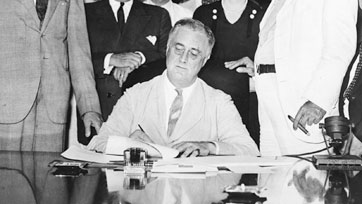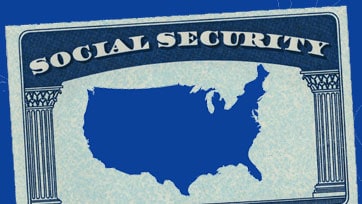Resources
 How Social Security is Financed
How Social Security is Financed
Social Security is financed through a dedicated payroll tax. Employers and employees each pay 6.2 percent of wages up to the taxable maximum of $137,700 (in 2020), while the self-employed pay 12.4 percent.
 History of FICA
History of FICA
FICA stands for Federal Insurance Contribution Act, a 1935 law enacted in conjunction with Social Security to establish the program’s funding mechanism. The federal government has been collecting FICA payroll taxes since 1937. President Franklin Roosevelt, who signed Social Security into law, insisted that the program be self-funded and not dependent on general federal revenue. That way, Social Security truly would belong to the workers who pay into it.
 Social Security Primer
Social Security Primer
Social Security is a lifeline: In 1935, after bank failures and a stock market crash had wiped out the savings of millions of Americans, the nation turned to Washington to guarantee the elderly a decent income.
 Social Security Snapshots
Social Security Snapshots
While some in Washington claim America can’t afford programs like Social Security and Medicare, the truth is states simply can’t afford to lose the economic benefits these programs provide to every community in our nation. The National Committee to Preserve Social Security and Medicare has released state-by-state snapshots of how much revenue Social Security contributes to the economy of every Congressional District in each state and US territory.






